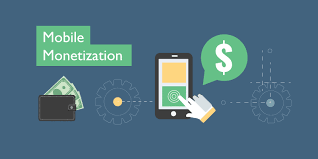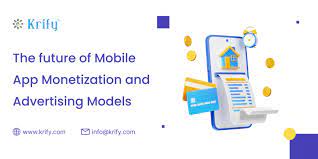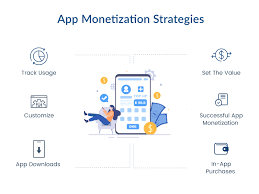Mobile app monetization plays a crucial role in a developer’s journey, and successful developers in the USA have taught us valuable lessons in this regard. They have employed a range of strategies to maximize their revenue streams.
One prominent strategy involves strategically integrating ads within their apps, rather than relying solely on upfront app purchases or subscriptions. These developers tailor advertisements to their app’s niche to ensure resonance with the target audience. Additionally, they make use of ad networks and platforms such as Google AdMob and Facebook Audience Network to optimize ad placement and earnings.
Another successful approach is the use of freemium models. Developers offer basic app functionalities for free while providing premium features or content through in-app purchases or subscriptions. This strategy entices users to try the app, expanding the user base and effectively monetizing engaged users.
In-app purchases have also proven highly lucrative. Developers sell virtual goods, additional levels, or exclusive content within the app, enhancing the user experience and generating revenue.
Successful USA developers actively engage in data-driven decision-making. They continuously analyze user behaviour, gather feedback, and iteratively refine their monetization strategies. This agile approach ensures that they remain attuned to user preferences and market trends.
In conclusion, successful USA developers employ versatile monetization strategies, including in-app advertising, freemium models, and in-app purchases. They maintain agility by adapting their strategies based on user data and feedback to optimize revenue while delivering value to their users.
Comprehending the Mobile App Monetization Landscape

Understanding the mobile app monetization landscape is pivotal for developers seeking to maximize their earnings in the competitive app market. In this dynamic field, developers actively explore various strategies to generate revenue from their apps.
One prevalent strategy involves integrating in-app advertising, where developers strategically place ads within their apps. This approach allows them to offer their apps for free, attracting a larger user base, while ads generate income. Developers often tailor these ads to align with their app’s niche, ensuring relevance to users. They frequently collaborate with ad networks like Google AdMob and Facebook Audience Network to optimize ad placement for maximum earnings.
Another effective technique is implementing freemium models. Developers provide essential app features for free, enticing users to download and engage with the app. Then, they monetize by offering premium content or features through in-app purchases or subscriptions. This approach leverages user engagement to generate revenue.
In-app purchases also prove lucrative, as developers offer virtual goods, exclusive content, or additional levels for sale within the app. These microtransactions enhance the user experience while contributing to the app’s financial success.
To succeed in this landscape, developers rely on data-driven decision-making. They continuously analyze user behaviour and gather feedback, allowing them to adapt and optimize their monetization strategies based on changing user preferences and market trends.
In conclusion, developers in the USA actively explore diverse monetization strategies, such as in-app advertising, freemium models, and in-app purchases, to thrive in the mobile app monetization landscape. Their agility and adaptability, driven by data insights, enable them to maximize earnings while delivering value to users.
The Significance of App Monetization

App monetization plays a pivotal role in the modern digital landscape. It is crucial for developers and businesses seeking to sustain and grow their mobile applications. The significance of app monetization can be attributed to several key factors.
First and foremost, app monetization directly impacts the financial success of developers. It provides a means to generate revenue from free or low-cost applications, thereby ensuring a return on investment and the ability to fund ongoing development efforts. This financial sustainability is essential for the longevity of the app.
Moreover, app monetization enables developers to offer their applications to a broader audience. By providing free versions or trial periods with monetization strategies like in-app advertising or freemium models, developers can attract more users. This expanded user base can lead to increased brand recognition and user engagement.
Additionally, app monetization enhances the user experience by enabling developers to invest in app improvements, updates, and customer support. It fosters a cycle of continuous improvement, leading to higher user satisfaction and loyalty.
In conclusion, the importance of app monetization cannot be overstated. It ensures financial viability, wider user reach, and improved user experiences, making it a cornerstone of successful app development and maintenance.
Future of Mobile App Monetization

The future of mobile app monetization holds exciting possibilities and is evolving rapidly to meet the changing dynamics of the digital landscape. Several key trends and developments are shaping the future of app monetization:
Innovative Ad Formats:
App developers are experimenting with new ad formats that are less intrusive and more engaging. Interactive and rewarded ads, for example, provide users with incentives like in-game currency or premium content in exchange for their attention, creating a win-win situation.
Subscription Services:
Subscription-based models are gaining traction, offering users access to premium features, content, or an ad-free experience for a recurring fee. This approach provides a steady stream of income for developers and ensures ongoing value for subscribers.
In-App Purchases and Microtransactions:
Developers continue to refine their in-app purchase strategies, offering virtual goods, customization options, or limited-time offers to encourage users to make small but frequent purchases within the app.
Augmented Reality (AR) and Virtual Reality (VR):
As AR and VR technologies mature, they present new monetization opportunities. Virtual showrooms, immersive gaming experiences, and virtual events are just a few examples of how these technologies can be leveraged for revenue generation.
Data Monetization:
User data, when handled responsibly and with user consent, can be a valuable asset. Developers can explore partnerships and data monetization strategies that respect user privacy while providing insights or targeted advertising opportunities.
Different Types of Monetization Models

In-App Advertising:
In-app advertising involves displaying ads within the app interface. These ads can take the form of banners, interstitials, video ads, or native ads. Developers earn revenue through ad impressions, clicks, or views. Popular ad networks include Google AdMob and Facebook Audience Network.
Freemium Model:
The freemium model offers a free version of the app with basic features while providing premium or advanced features through in-app purchases or subscriptions. Users can choose to upgrade to access additional content or functionality.
In-App Purchases:
This model allows users to buy virtual goods, such as game items, cosmetic upgrades, or premium content, directly within the app. In-app purchases often enhance the user experience and drive revenue through microtransactions.
Subscriptions:
Subscriptions involve users paying a recurring fee, typically on a monthly or yearly basis, to access premium content, services, or an ad-free experience within the app. This model provides a steady income stream for developers.
Pay-Per-Download (Paid Apps):
Paid apps require users to make a one-time payment to download and access the app. The app’s price may vary depending on its perceived value and niche.
Sponsorships and Partnerships:
Developers can monetize their apps through sponsorships and partnerships with brands or advertisers. This often involves integrating branded content or features into the app in exchange for financial support.
How to choose a mobile app monetization strategy?

Understand Your Audience:
Start by gaining a deep understanding of your target audience. Know their demographics, preferences, and behaviors. This insight will help you tailor your monetization strategy to their needs and expectations.
App Type and Niche:
Consider the nature of your app and its niche. Certain monetization models may be better suited to specific app categories. For example, gaming apps often excel with in-app purchases, while content-focused apps might lean towards subscriptions or ads.
Competitor Analysis:
Analyze successful apps in your niche to see what monetization strategies they are using. This can provide valuable insights into what works in your industry.
User Experience:
Prioritize the user experience. Intrusive or excessive ads can drive users away. Choose a strategy that complements the app’s functionality and doesn’t disrupt user engagement.
Testing and Iteration:
Be prepared to experiment and iterate. It’s rare to find the perfect monetization strategy right away. Test different approaches, gather user feedback, and adjust your strategy accordingly.
Frequently Asked Questions (FAQ)
Q1: What is mobile app monetization, and why is it important?
A: Mobile app monetization refers to the process of generating revenue from a mobile application. It is essential for sustaining app development efforts, offering value to users, and achieving financial success.
Q2: What are some common mobile app monetization strategies used by successful USA developers?
A: Successful developers often use strategies such as in-app advertising, freemium models, in-app purchases, subscriptions, and data monetization to generate revenue.
Q3: How do in-app advertisements work, and what are the best practices for implementing them?
A: In-app advertisements involve displaying ads within the app’s user interface. Best practices include strategic ad placement, relevance to the app’s niche, and optimizing ad networks for maximum earnings.
Q4: Can you explain the freemium model, and what are its benefits?
A: The freemium model offers basic app features for free while providing premium content or features through in-app purchases or subscriptions. It attracts a larger user base and monetizes engaged users effectively.
Q5: What are in-app purchases, and how do they enhance the user experience?
A: In-app purchases allow users to buy virtual goods, additional content, or features within the app. They enhance the user experience by offering customization options and unlocking premium content.


















Add Comment